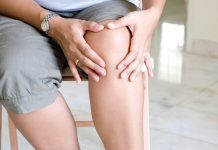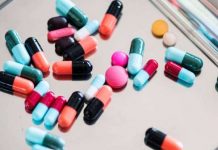Peripheral Arterial Disease is a condition where plaque forms inside the arteries that supply blood to the heart or inside the arteries that supply oxygen carrying blood to the legs.
The formation of this plaque inside the arteries impedes blood flow to these parts of the body, thereby causing complications like aching limbs and gangrenes in the legs. Peripheral Arterial disease is also popularly called P.A.D.
The reasons for developing P .A. D could be one of the following:
- Smoking releases nicotine into the blood leading to the formation of plaque in the inner walls of the arteries.
- High blood pressure.
- High insulin level in the blood due to diabetes
The symptoms of P.A.D are:
- A bluish tinge to the skin in the leg.
- Pain in the legs while walking or climbing steps.
- Erectile dysfunction in men.
- Weak pulse or absent pulse in the leg.
- Poor or decreased nail or hair growth in the legs.
- An imbalance in the temperature of one leg in comparison to the other.
- Slow healing of wounds or sores in the feet or legs.
Treatment of Peripheral Arterial Disease
Once diagnosed through proper tests, Peripheral Arterial Disease is treatable through adopting any of the below mentioned ways.
Bringing changes to lifestyle
The best way to deal with any disease is obviously to prevent it. Peripheral Arterial Disease can be prevented by adopting a lifestyle that helps you prevent blood pressure or diabetes. Eating healthy, taking regular exercise, giving up on smoking etc. are some of the lifestyle changes that can help you prevent P.A. D from attacking your body.
Follow a proper diet plan that will help you lower the amount of trans- fats and excess sodium intake. This will ideally help you in reducing your overall weight and also lower the level of cholesterol and diabetes in your blood.
Medicines
In case you have already been diagnosed with Peripheral Arterial disease then the doctor may prescribe medicines which will help alleviate the following conditions.
- Reducing the level of glucose in the blood.
- Reducing the level of cholesterol in blood
- Reducing the pain that occurs in the leg while walking, climbing stairs etc.
Surgery
If medicines fail to address the severe cases of P. A. D, then the next step would be to opt for surgery. Surgery could adopt the following forms
Bypass Grafting
Suppose the artery is totally blocked or nearly blocked then a bypass grafting may be done by your doctor where a part of blood vessel from any other part of the body or a man- made tube is used to bypass the clot or blockage in the artery, and the blood is made to flow unhindered.
Angioplasty and Stenting
In this a tube with a balloon at its tip is inserted into the blocked artery. Once the blocked portion is reached the balloon is inflated and the plaque is pushed towards the walls of artery and a stent or a fine mesh coated with medicine is placed into the artery to prevent further blockage.
Atherectomy
In this method the plaque formation is cut off or shaved off using a catheter. The plaque is either removed or is washed away by the blood stream.
Photo Credit By: blog.drsmithdpm.com







